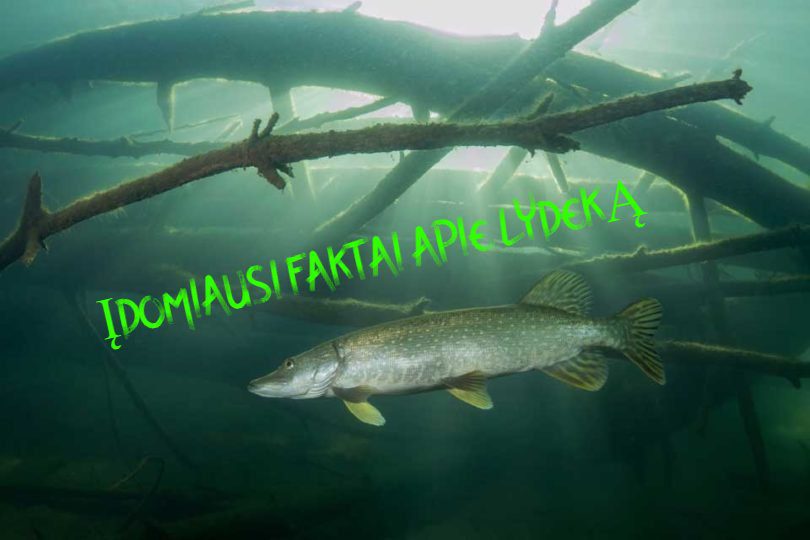Karpis yra viena iš labiausiai paplitusių žuvų pasaulyje. Išvertus iš graikų kalbos, karpis reiškia „derlius, vaisingumas“, kuris gana tiksliai apibūdina visaėdę, greitai augančią gėlavandenę žuvį. Žuvis pasiekia nemažą dydį, išsiskiria gudrumu ir nenuspėjamu elgesiu, todėl sugauti trofėjų nėra lengva. Žvejai praleidžią ne vieną parą prie tvenkinio tam, kad sugautų savo gyvenimo žuvį.
Kaip atsirado karpis
Karpiai Lietuvoje pradėti auginti VII–XVIII a. Vėliau buvo įrengiami karpių auginimo tvenkinių ūkiai, daugiausia Vilniaus krašte ir Žemaitijoje: Verkių, Trakų Vokės, Vasaknų, Bajorėlių Šilo-Pavėžupio, Kurtuvėnų dvaruose. Vienas žinomiausių karpių augintojų buvo grafas Steponas Pliateris–Zyberkas (1881-1943). Tarpukariu karpių mailius, siekiant pagerintų jų veislių savybes imta vežti iš Vakarų Europos šalių, daugiausia iš Čekijos ir Vokietijos, po II-jo Pasaulinio karo – iš Rusijos. Išvesta daug karpių veislių. Lietuvos Žemės ūkio ministro 2010 m. vasario 18 d. įsakymu Nr. 3D-133 BV veislinės atmainos karpis buvo pripažintas lietuviška karpių veisle „Šilavoto karpis“. Šios veislės BV veislinės atmainos veidrodinius karpius dabar augina dauguma šalies tvenkinių žuvininkystės ūkių.
Vietinė ichtiofauna susiformavo poledyniniu laikotarpiu, todėl yra jauna ir palyginti negausi rūšimis (vidaus vandenyse gyvena tik 42 aborigeninės žuvų rūšys). Introdukuotų rūšių atsiradimas siejamas su žmogaus ūkinės veiklos plėtra. Lietuvoje per visą laikotarpį bandyta introdukuoti 21 žuvų rūšį, dažniausiai įvežtinės rūšys nesugebėdavo prisitaikyti prie naujų sąlygų ir, nustojus jas veisti, vėliau išnykdavo. Karpis dėl žemos vandens temperatūros negali subrandinti lytinių produktų ir išneršti, kai kuriais atvejais išneršia, bet mailius žūsta žiemos laikotarpiu. Karpis tai ne tik svarbus akvakultūros objektas, tačiau reikšmingas ir mėgėjų žvejybai, ypač stambių ar rekordinių žuvų gaudymui principu „pagavai– paleidai“.
Kokios būna karpių rūšys
Karpis yra viena iš labiausiai paplitusių žuvų rūšių, gyvenančių mūsų planetoje. Karpiai gyvena daugelyje pasaulio vandens telkinių, o jų rūšių skaičius siekia daugiau nei 5000. Šiame straipsnyje daugiausia dėmesio skirsime būtent mūsų šalyje gyvenantiems karpiams.
Dažniausiai karpiai yra taikios žuvys, kurios yra įpratusios valgyti augalinį ir iš dalies gyvūninį maistą vabzdžius, vabalus, sliekus ir kitą zoo planktoną. Tik retkarčiais pasitaikydavo atvejų, kai karpis griebdavo praplaukiantį mailių.
Paprastasis karpis
Paprastasis karpis arba dar kitaip vadinamas sazanas – gyvena daugumoje mūsų šalies vandens tvenkinių. Nors karpį pagauti nėra taip paprasta ir kartais atrodo, kad jo visai nėra. Tačiau tai toli gražu nėra tiesa. Tiesiog karpis labai atsargus ir jį gaudyti – visas mokslas. Šios žuvies rūšies negalima supainioti su kitų rūšių karpiais keliais tik jiems būdingais bruožais. Paprasto karpio kūnas yra visas padengtas žvynais. Jis yra simetriškas ir apvalios išvaizdos. Jis taip pat padengtas gleivėmis. Tai leidžia karpiui apsiginti nuo bakterijų ir lengviau judėti vandenyje.
Veidrodinis karpis
Veidrodinis karpis turi daug mažesnę populiaciją nei jo giminaitis paprastasis karpis. Ši rūšis atsirado išvedant naują karpių veislę, sukryžminus paprastąjį karpį ir keletą kitų rūšių. Iš pradžių tokio eksperimento tikslas buvo išvesti didelės veislės karpius, ne tokius įnoringus atšiaurioms gyvenimo sąlygoms ir greitai priaugančius svorio. Jį išvedę žmonės sugebėjo įvykdyti savo užduotį, bet tik iš dalies.
Veidrodinis karpis puikiai jaučiasi daugelyje mūsų šalies vandens tvenkinių, greitai priauga svorio, tačiau tuo pačiu yra įnoringesnis ir gamtoje aptinkamas daug mažiau. Šios rūšies karpiai turi keletą būdingų bruožų, pagal kuriuos jį galima lengvai atskirti nuo kitų. Pirma, reikia pažymėti, kad veidrodinis karpis praktiškai neturi žvynų. Tik kartais ant jo kūno galima pastebėti atskirus didelius žvynus nugaros peleko ir uodegos srityje. Antra, šis karpis turi savotišką spalvą, kuri yra daug tamsesnė nei paprasto karpio. Būtent pagal šias savybes galite atskirti jį nuo kitų.
Koi karpiai
Koi karpių kilmės istorija nueina į praeitį. Anot mokslininkų, ši rūšis Kinijoje atsirado dėl tyčinio vietinių karosų ir laukinių karpių kryžminimo. Taigi Kinijos gyventojai sukūrė neįtikėtinai gražią žuvį, kuri vis dar turi didelę dekoratyvinę paklausą. Dėl kryžminimo ši žuvis įgavo laukinio karpio kūno sudėjimą, o ryškią spalvą paveldėjo iš karoso. Buvo gautos gana didelės žuvys, kurių svoris dažnai gali siekti 1 kg ar daugiau ir turinčios ryškią spalvą.
Karpio spalvos būna įvairios – nuo baltos ir mėlynos iki raudonos ir juodos. Iš Kinijos koi karpis greitai atkeliavo į Japoniją. Iš pradžių jis ten buvo naudojamas maistui. Japonai karpius veisė šalia ryžių plantacijų esančiuose tvenkinius ir taip išgelbėjo darbininkus bei atokių vietovių gyventojus nuo to, kad nereikėjo toli keliauti ieškoti maisto. Šiuolaikiniame pasaulyje ši karpių žuvies rūšys nėra naudojama kaip maisto produktas, dažniausiai auginamas kaip dekoratyvinis elementas.
Kuo minta karpis
Karpis yra gobši, visaėdė žuvis, kuri mėgsta maitintis nuo dugno. Specialios burnos ir žiaunų struktūros pagalba žuvis filtruoja dumblo turinį, palikdama tik maistinius komponentus. Didelės ir tankios lūpos vienu metu sugeba nušlifuoti net ir kietus vėžiagyvių kiautus.
Karpis mielai įsisavina augalinį ir gyvulinį maistą. Minta: lervomis, kirmėlėmis, vabzdžiais, dėlėmis, moliuskais, buožgalviais, vėžiagyviais, ikrais, vandens augalija ir t.t.
Karpiai kaip maisto produktas
Karpio mėsa gana skani, šiek tiek saldoka, šiek tiek kvepia dumblu. Jis yra mažai kaloringas – 112 kcal / 100 g ir gali būti naudojamas dietinėje mityboje. Taip pat yra baltymų (16 g), vitaminų (A, B1, B6, B12, C, T, PP) bei naudingų makro ir mikro elementų: kalio, kalcio, magnio, geležies, jodo, sieros, cinko, fosforo ir kt., riebalų rūgštys Omega-3, 6. Reguliarus karpių vartojimas padeda normalizuoti širdies ir kraujagyslių sistemos funkcijas, stiprina imunitetą ir kaulinį audinį, lėtina senėjimo procesus.
Didžiausią naudą duoda natūralioje aplinkoje gyvenančios žuvys. Dirbtiniuose tvenkiniuose į jų maistą dedama įvairių cheminių priedų, hormonų ir antibiotikų, kad paskatinti augimą. Todėl patariama rinktis žuvį tik iš ekologiškų ūkių.
Pabagai
Tai ne tik skani, bet ir stipri žuvis, todėl jo gaudymas suteikia meškeriotojams daug teigiamų emocijų. Yra net meškeriotojų kategorija – karpininkai, kurie užsiima išskirtinai karpių žvejyba. Ir tai nenuostabu, nes pagauti trofėjinį karpį nėra taip paprasta, nes suaugusios žuvys yra gana atsargios ir tenka sėdėti ne vieną dieną norint sulaukti trofėjinės žuvies kibimo.














